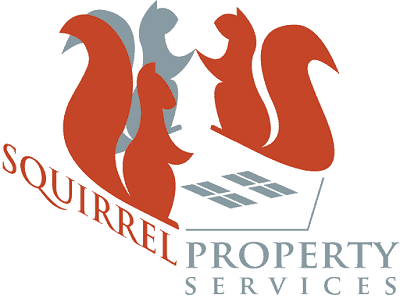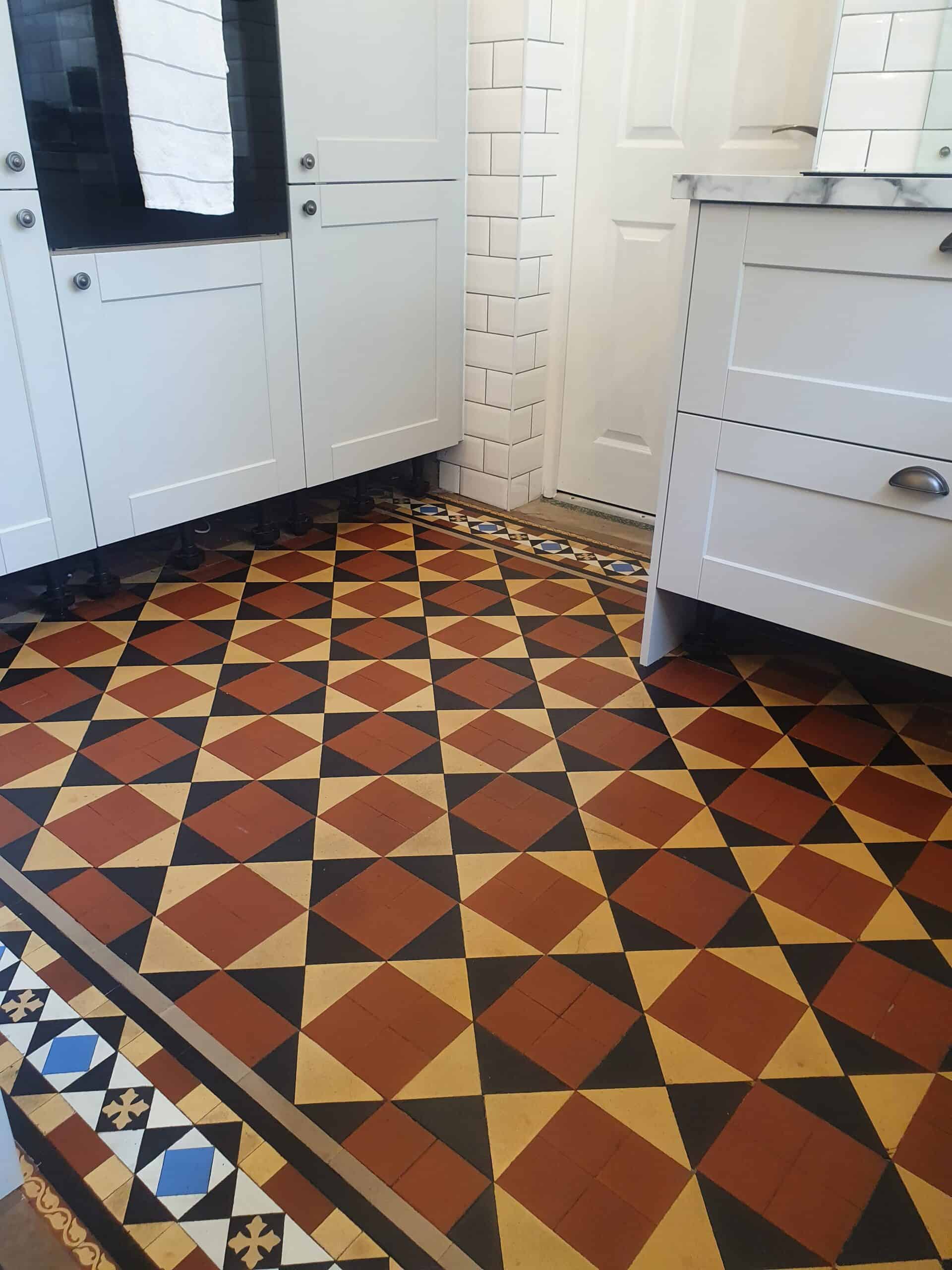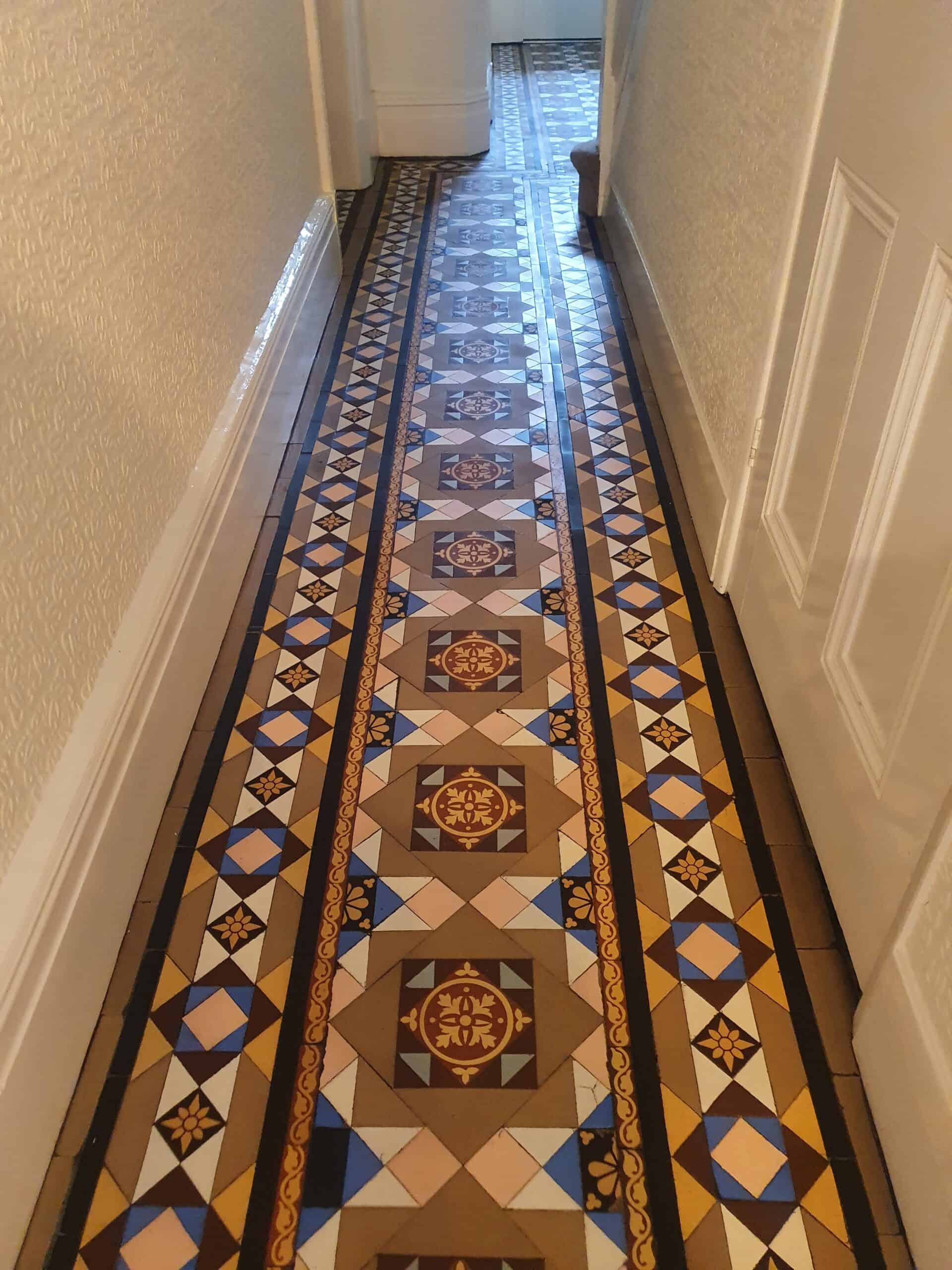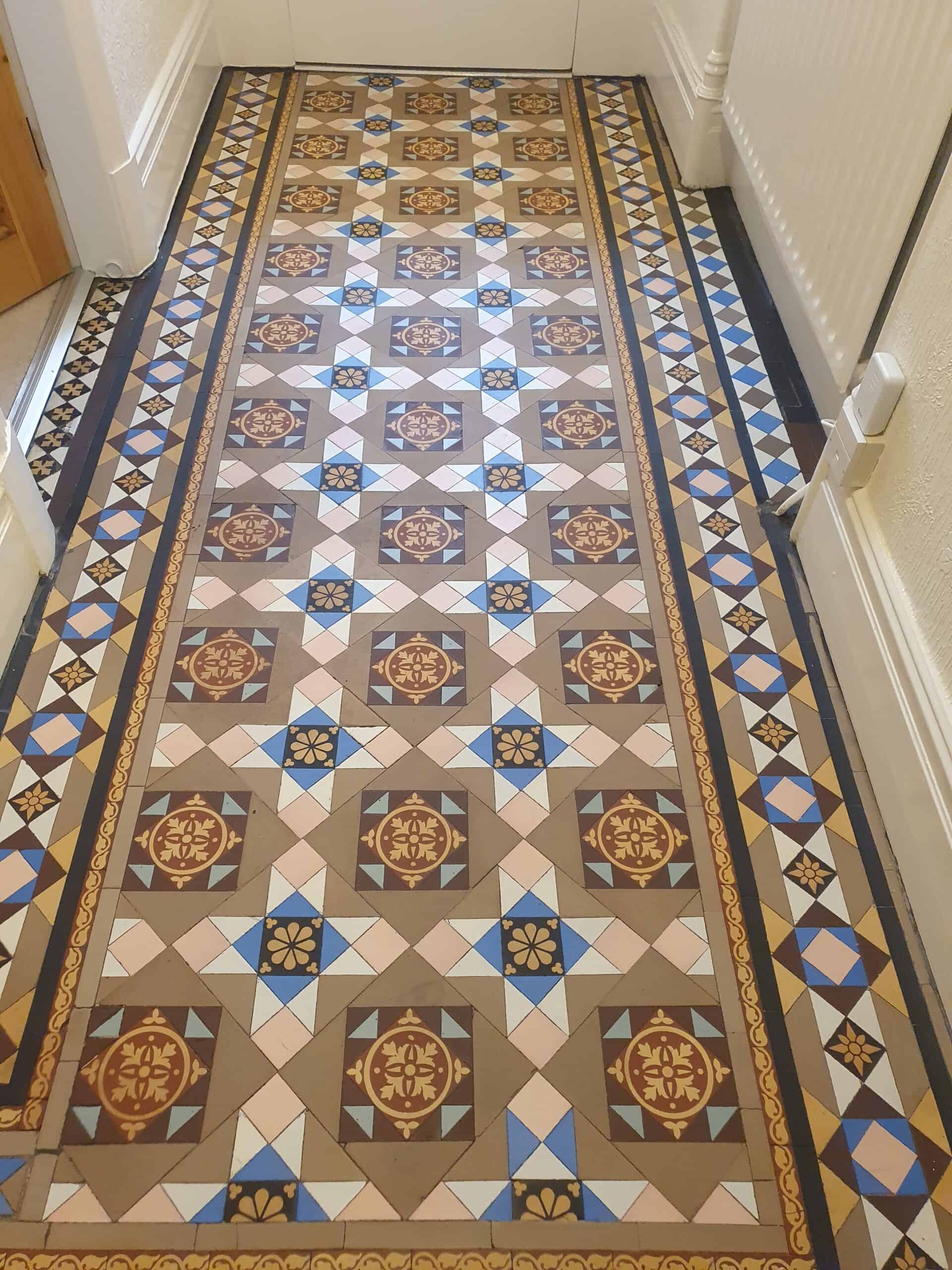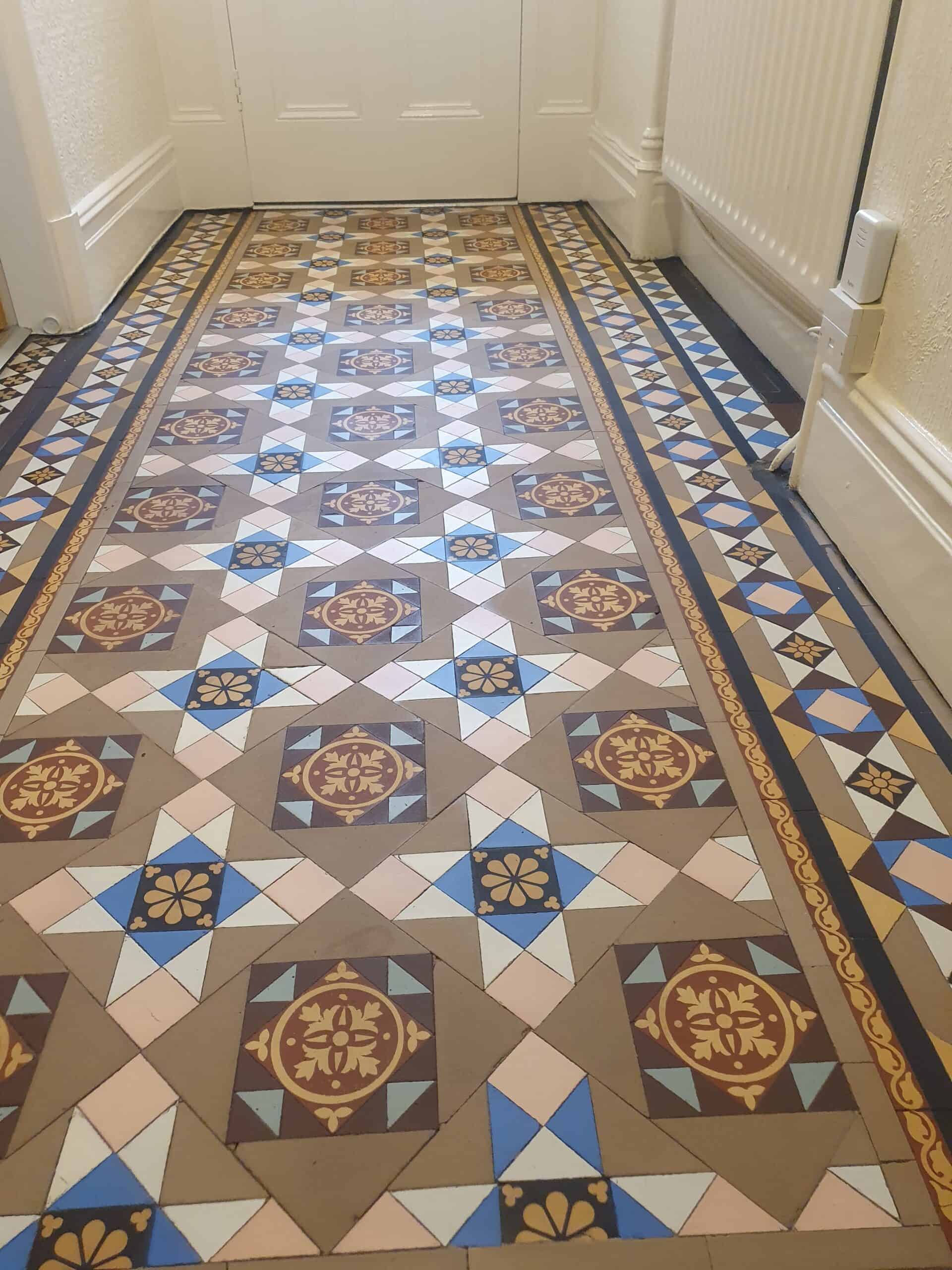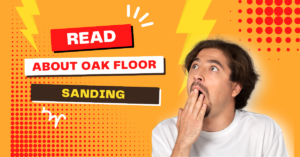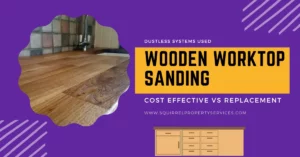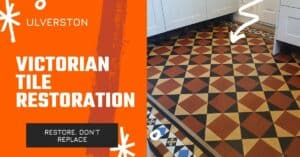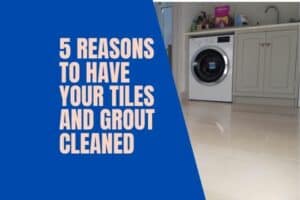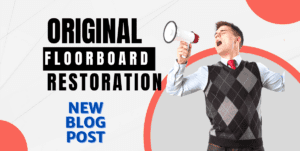Victorian tile restoration project
John from Ulverston got in touch about our Victorian tile restoration service. I arranged a home survey appointment for him. This let me see the tiles and gave him a chance to ask questions about the overall process of the tile restoration service.
The tiles in his home spanned the large entrance and hallway. The tiles then changed to a different design in the rear of the property. John had recently had a wall removed between the kitchen and dining area. This left a concrete patch between the Victorian tiles in the kitchen and the dining area. It was arranged that reclaimed tiles would be sourced from The Vintage Floor Tile Company. Reclaimed tiles are always best as the colour tones would be a better match. It was also arranged that Kruger Coverings would carry out the repair work. I would then come in and do the surface restoration and sealing of the floor tiles.
How do you restore Victorian tiles?
Spot removal of staining
. Staining on old tiles can be permanent. However, there are some great products that can be used to solve the problem. This floor, in the kitchen area, had a number of rust spots. A rust remover from Faber was applied and you know it is rust when the product goes purple. Just like the products for cleaning iron deposits from car paintwork or alloy wheels. (insert photo)
Time for deep machine clean of the tiles
. This is carried out using our heavy-duty rotary machine, The Conan. Not to be confused with the polishing machines found in school buildings. This is a heavy slow speed machine. A splash guard is attached to protect surrounding areas. In general, a high alkaline product is used. This is sprayed down on a damp floor and then agitated with the rotary machine. It is then left to dwell for a short time and agitated again. Further product is sprayed to keep the area wet. The purpose of this is for the product to lift out the soluble dirt and soiling (emulsification) from the pores of the tiles. This process is repeated if required. All dirty water and sometimes sludge is removed using the wet vac system.Rinse
. This stage is really, really important. A floor can look in better condition but plenty of dirt is left behind if the rinsing process is not done correctly. Freshwater should be used with the rotary machine. Again the wet vac system is used to remove all the water.Leave the tiles to dry out
. These floors need to be left for at least 48 hours to dry out correctly. You can still use the floors as the surface won’t be the issue. Due to the age of the tiles, most become quite porous. This means they suck up water during the process. Water also gets through to the subfloor via gaps between tiles. For the sealant stage to be done correctly the tiles need to be dry. The sealant will fill the pores in the stone and you don’t want water in there. Plus, if the floor isn’t dry you won’t know if it is fully clean.Sealing the Victorian tiles
. The sealing stage is just as important as the other stages. On Victorian tile restoration projects, I often find the colours have dulled over time. Most floors are at least 120 years old so that isn’t surprising. A good quality colour enhancing penetrating sealant is used. It is important to not use surface coatings as these can stop the floor breathing correctly. Due to the age of the floors, there is no DPC within the subfloor. So the ground moisture needs to safely evaporate through the subfloor and then the tiles. Surface coatings can stop this process from happening properly. This can lead to damp patches under the sealant or white patches (blooming). In extreme cases, it can lead to rot in the joists or dampness going into surrounding walls. I favour Dry-Treat Colour Intensifier. This product enables the floor to breathe still, enriches the colours and leaves a stunning matte finish, as it was meant to be. The sealant also makes cleaning the tiles easier going forward. For most spills and accidents there is plenty of time to clean up before the tiles are stained.
The final result of the Victorian tile restoration in Ulverston
As you can see the cleaning and sealing of John’s tiles went as planned. He was left with a stunning entranceway, hallway and an open plan kitchen/dining area. John had experienced some damp problems in his property so the drying out process took longer than expected. In fact, it was a good few weeks. John and his family were very patient as they wanted the floor sealed correctly. It was the correct decision that produced a stunning and authentic result.
